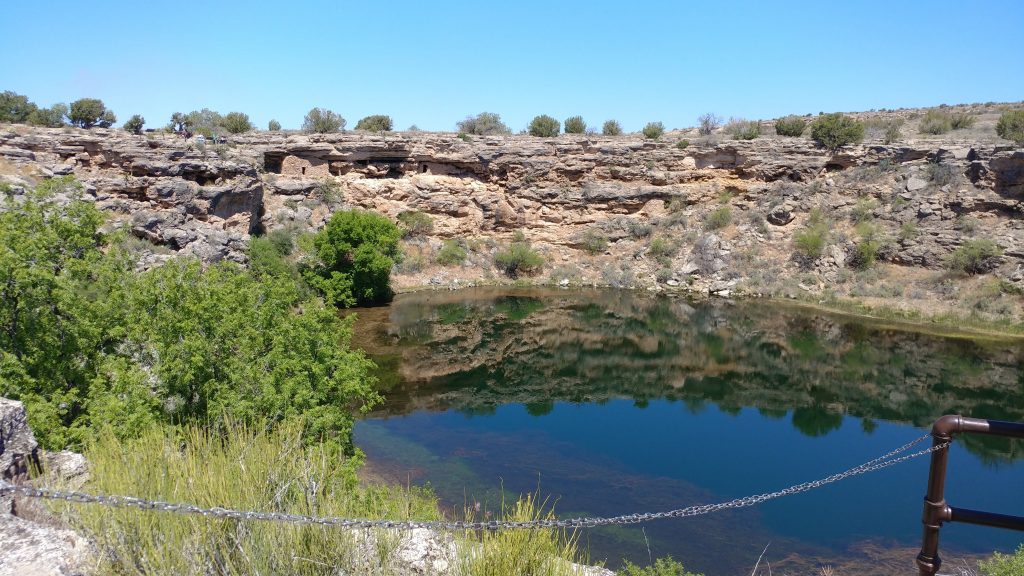Of the three national monuments in the Verde Valley, Montezuma Well is my favorite–and not just because the birding is good. It has a little bit of everything: Sinagua dwellings, varied habitat, natural beauty, and the Well itself is unique in the world. The water that feeds the Well comes from snow that melted around the Flagstaff area–about 13,000 years ago. The 1.6 million gallons of water that pass through the Well on a daily basis has about 80 times the amount of carbon dioxide found in tap water and 10 times the arsenic. At least five of the animal species and one plant species are endemic–found only in the Well.
The Sinagua people arrived at the Well around 800 AD and built around 80 rooms, so we can guess that this settlement was home to 200+ people. Around 850 AD they built an irrigation canal that originally ran seven miles. (They figured out, through trial and error, that corn, beans and squash would not absorb arsenic from the Well water saturating the soil.) It currently runs a couple miles and provides the water that nourishes the Picnic Area, which is why the area is such a good riparian birding spot. “The Sinagua culture, as defined by archaeologists, ended around 1300. Some people did remain and are part of the Yavapai today. Reasons many people left are mostly attributed to climate change–drought and temperature drops, both drastically affecting farming communities,” Krystina Issac, Park Ranger.

Although Montezuma Well National Monument is only 3/4 of a mile long and 1/4 of a mile wide and is consistent in habitat, eBird has decided to divide the park into two hotspots: The Well and the Picnic Area. If you do both of them at once you will walk a total of about two miles.
The Picnic Area

According to eBird, the number of species reported in the Picnic Area is 161, but that number is low, The Picnic Area only became an eBird hotspot in 2014, but people continued to report the Montezuma Well as the whole park long after that. In fact, for the years 2014-2016 only 11 checklists have been recorded. So 161 species are what has been reported in the last three years, and birders still stick to habits and report both areas as Montezuma Well, mistakenly attributing the Picnic Area’s birds to the Well list.
The Picnic Area hotspot is an elongated doughnut of riparian habitat with mesquite basque and grasslands in the center. A well-groomed loop trail runs the inside perimeter of the doughnut.
Riparian Habitat
Birder’s can easily get lost in the Picnic Area, spending several hours in that part of the park alone. Massive cottonwood, Arizona sycamore, and velvet ash surround a giant juniper in the center, providing year-round feeding for birds–including Cooper’s Hawks and Great Horned Owls. (See table below for a listing of birds you can see.) As previously noted, the riparian area surrounds the Mesquite Bosque and Grassland habitats, with the irrigation canal to the west and Beaver creek to the east. As you walk the trails, you will find mixed flocks of birds with everything from warblers to kinglets to titmice. Red-tailed and Common Black Hawks can be seen roosting in the trees scanning the grasslands below.

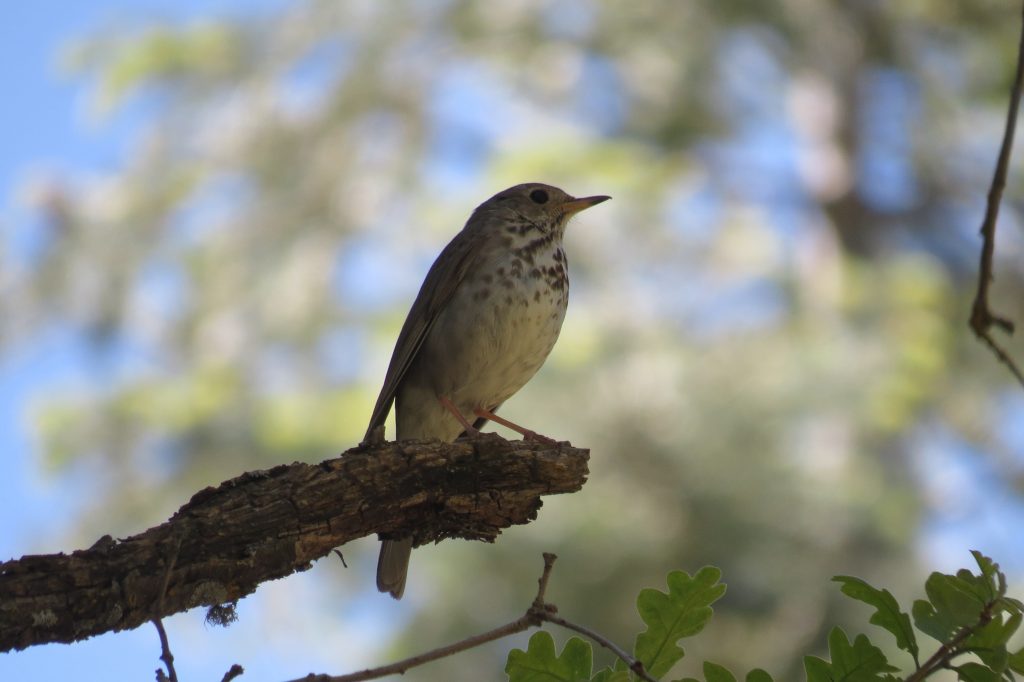
Mesquite Bosque
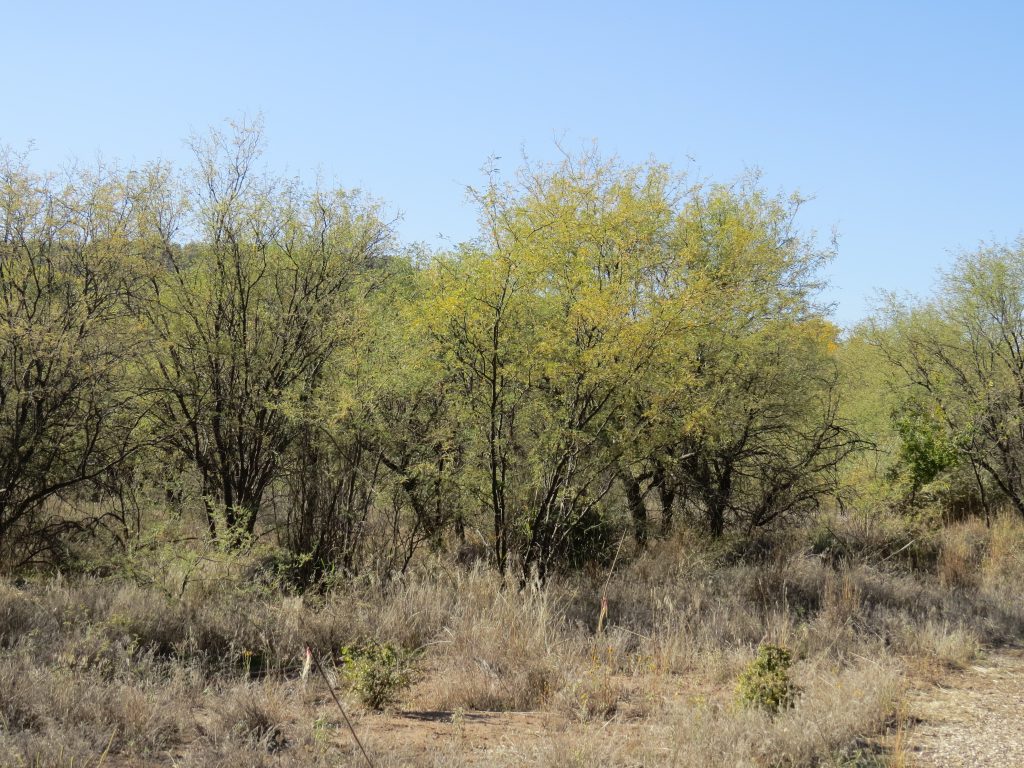
The mesquite bosque habitat is unnatural in that it was formed when cattle fed on the mesquite pods in and around the grassland areas and excreted them in the grasslands. In essence, the cows ate all the natural grasses and replaced them with a thick mesquite forest. I’ve been told, but have not been able to confirm, that the Verde Valley has 85% of the world’s Mesquite Bosque habitat.
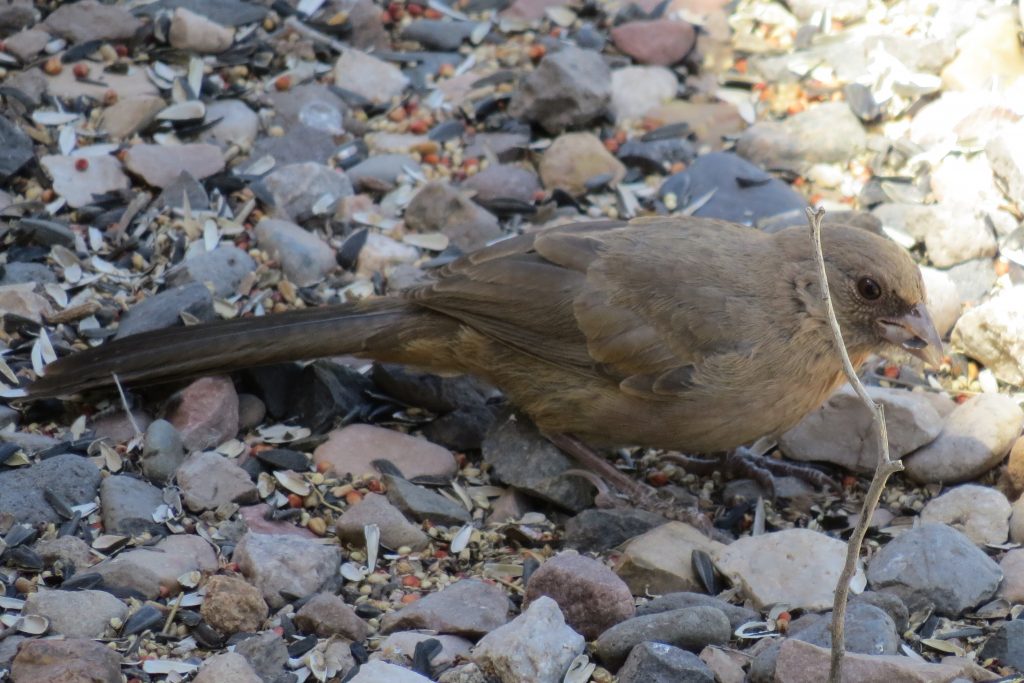
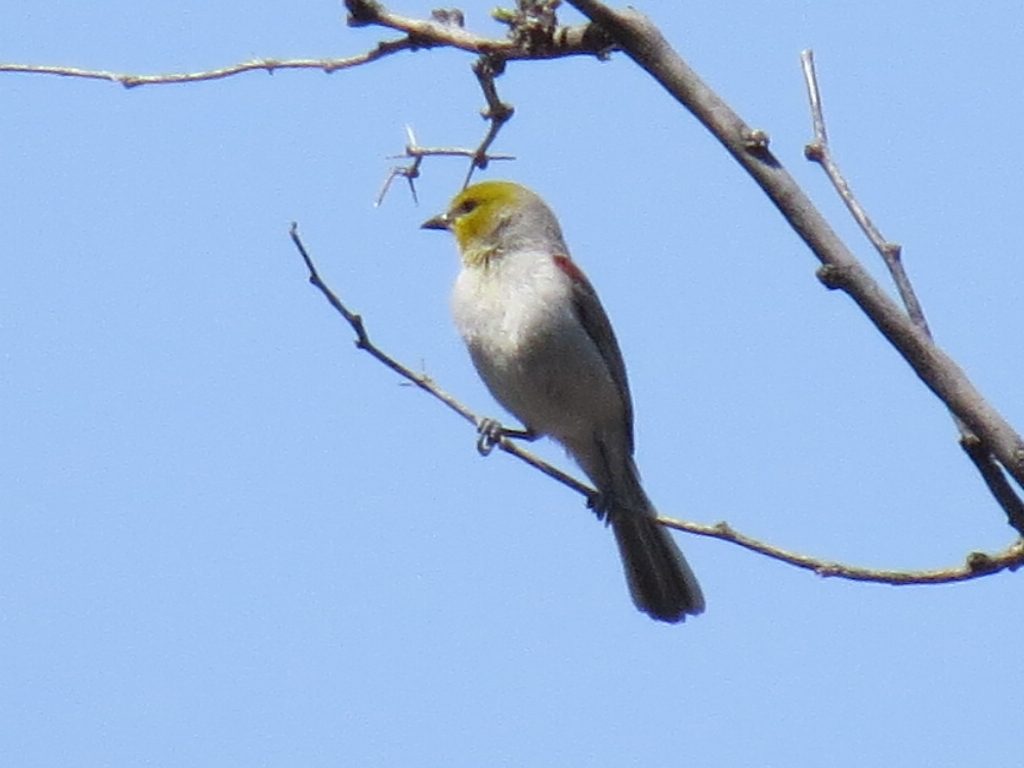
Grasslands
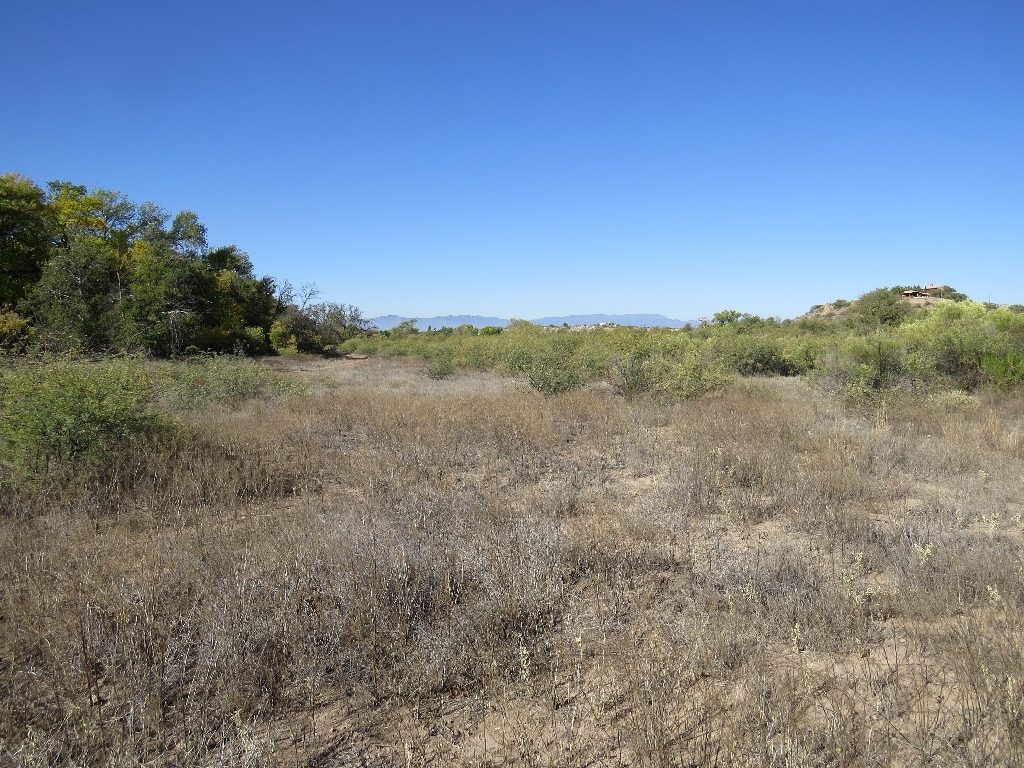
The natural grasslands south of the Picnic area were decimated by cattle in the early 1900’s. They were replaced by invasive species that the cattle would not eat. In recent years, volunteers from conservation groups have been trying to restore the natural habitat and have been somewhat successful, but it has been an ongoing battle. The grasslands are commonly the habitat of wintering sparrows. Deer, javelina, and foxes can be seen along the trail.
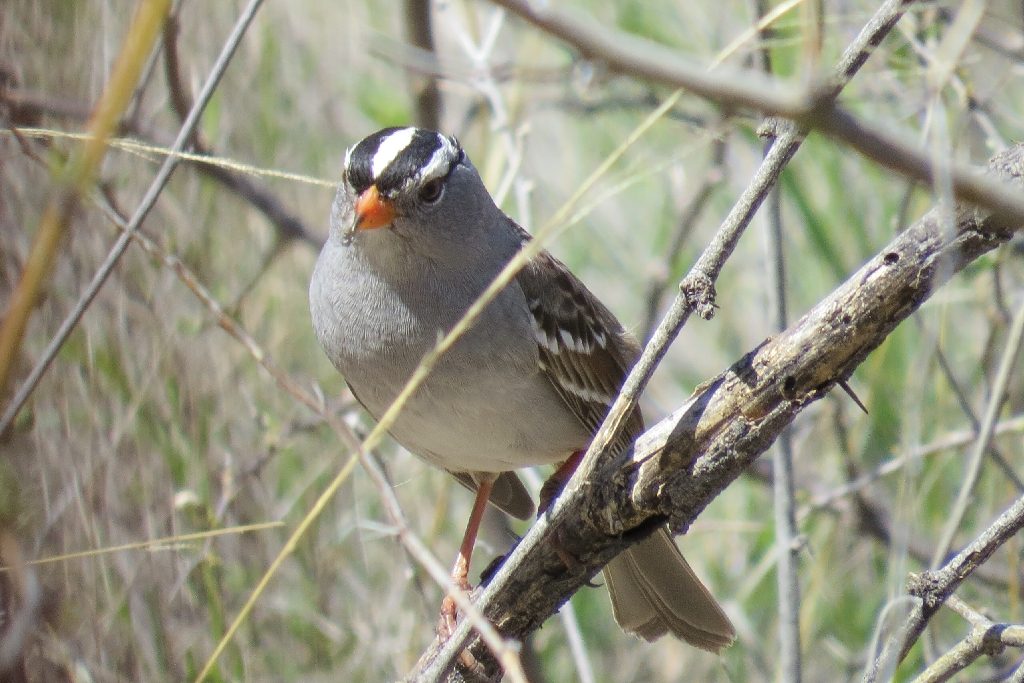
Montezuma Well
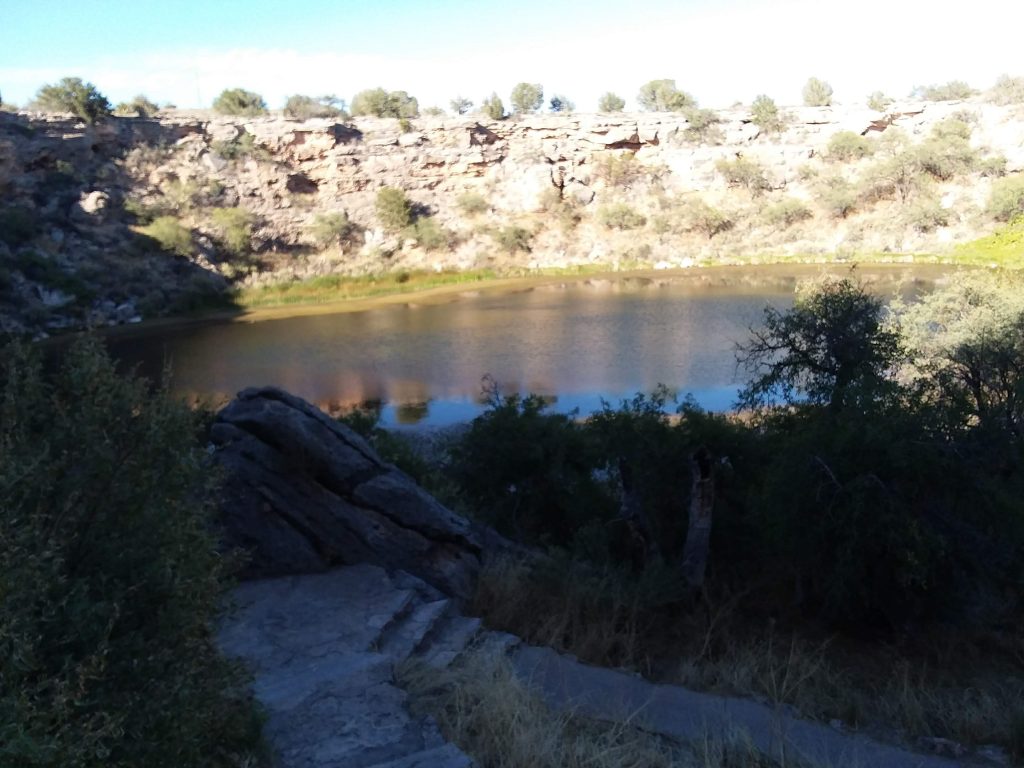
From October through March the Well is home to hundreds of ducks, both dabbling and diving. The Well water’s high carbon dioxide content makes it impossible for fish to live there. In the 1920’s the Well was owned by a rancher who turned it into a private tourist attraction. He had a plan to make it a private fishing resort, so he dumped hundreds of live fish into the water. Within minutes they all drowned. Diving ducks, normally fish eaters, feed on leaches that, during the day, reside at a depth of about 40 feet. Although the water seems murky, that is an illusion. When Bufflehead dive, you can watch them and follow their bubble trail deep into the depths. The leaches are endemic to the well, and neither have teeth nor suck blood. Instead they feed on small shrimp-like amphipods , also endemic. Likewise, the endemic water scorpion is nothing like its distant land cousins. It has only four legs and its articulated tail is a snorkel, not a stinger. It can breathe under water and pick insects off the surface.
Unaware that no fish live in the Well, fishing birds such as mergansers, cormorants and herons come to the well only to be disappointed.
Great-horned Owls have nested in the walls four of the last five years. The cliffs are also home to Canyon and Rock Wrens. Black Phoebes and Yellow-Rumped Warblers sit in the vegetation on the banks and dart out to capture insects. Sora and Virginia Rails have been seen walking on top of the pond weed. The Well is also home to muskrats, ground squirrels, foxes and Sonoran mud turtles.
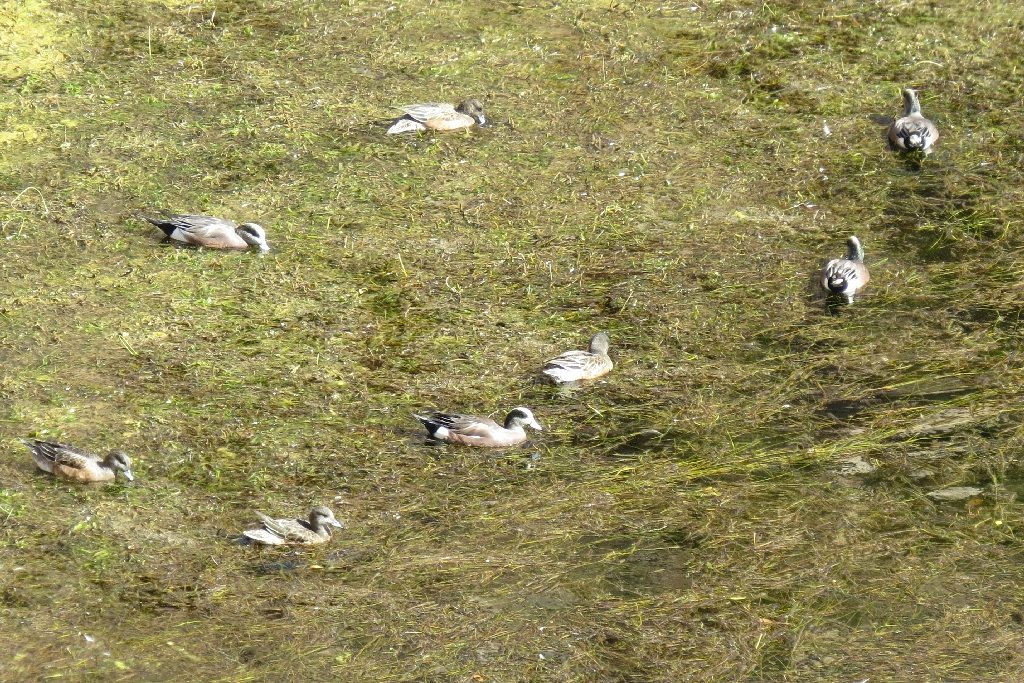
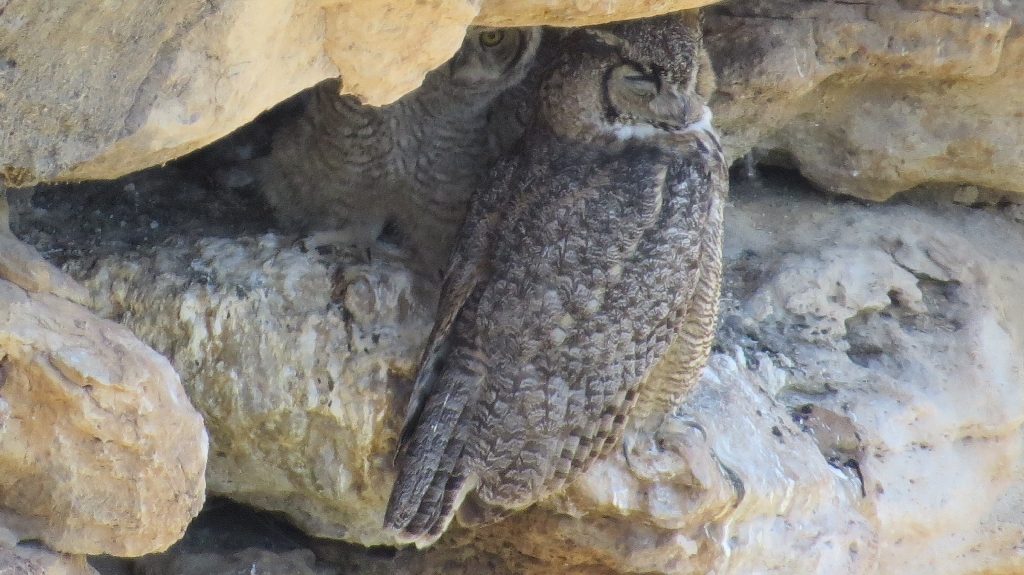
Surrounding Grasslands
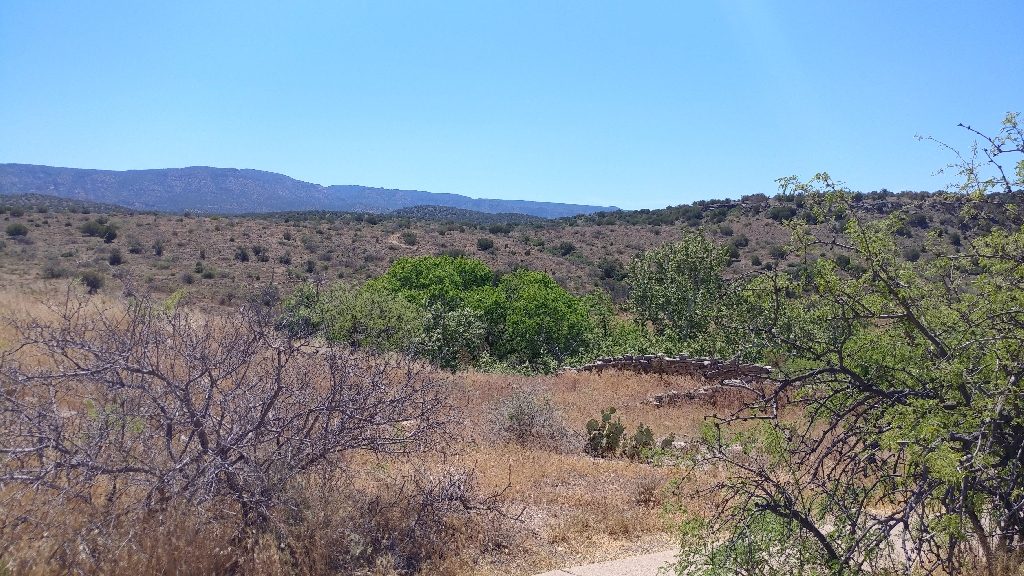
The grasslands surrounding the Well seem more arid than the grassland near the Picnic Area. As a result, you will find different species here. For instance, Black-throated Sparrows nest here. Sage Thrashers are often found hanging out in the mesquite trees near the Contact Station.
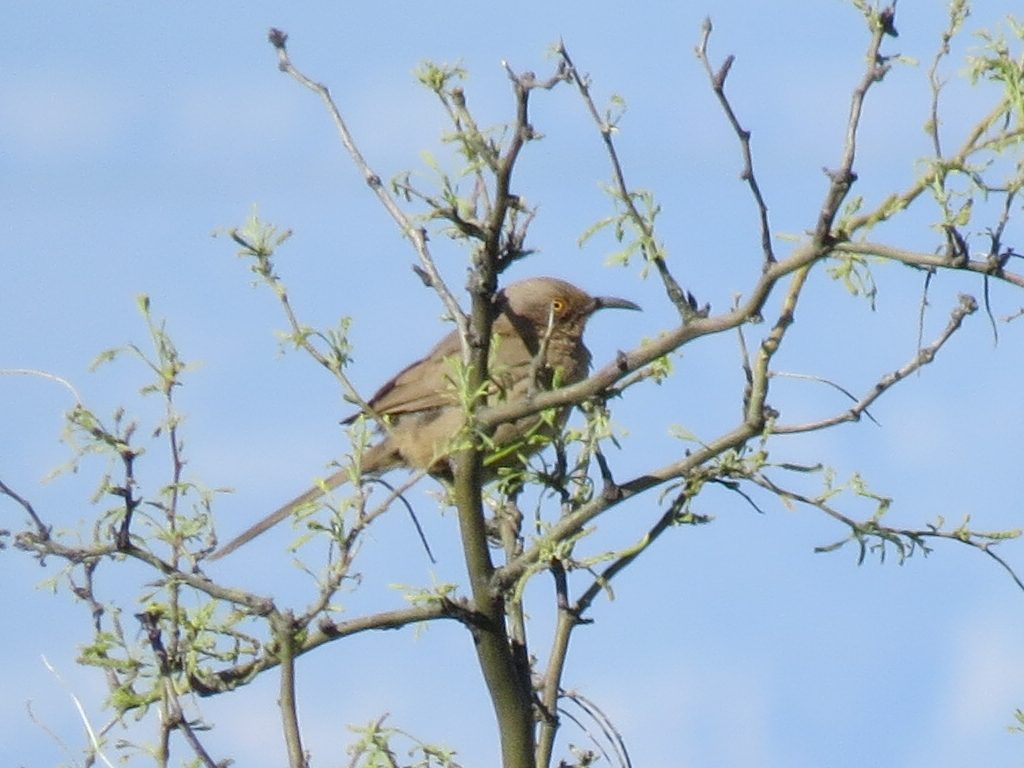
The Outlet
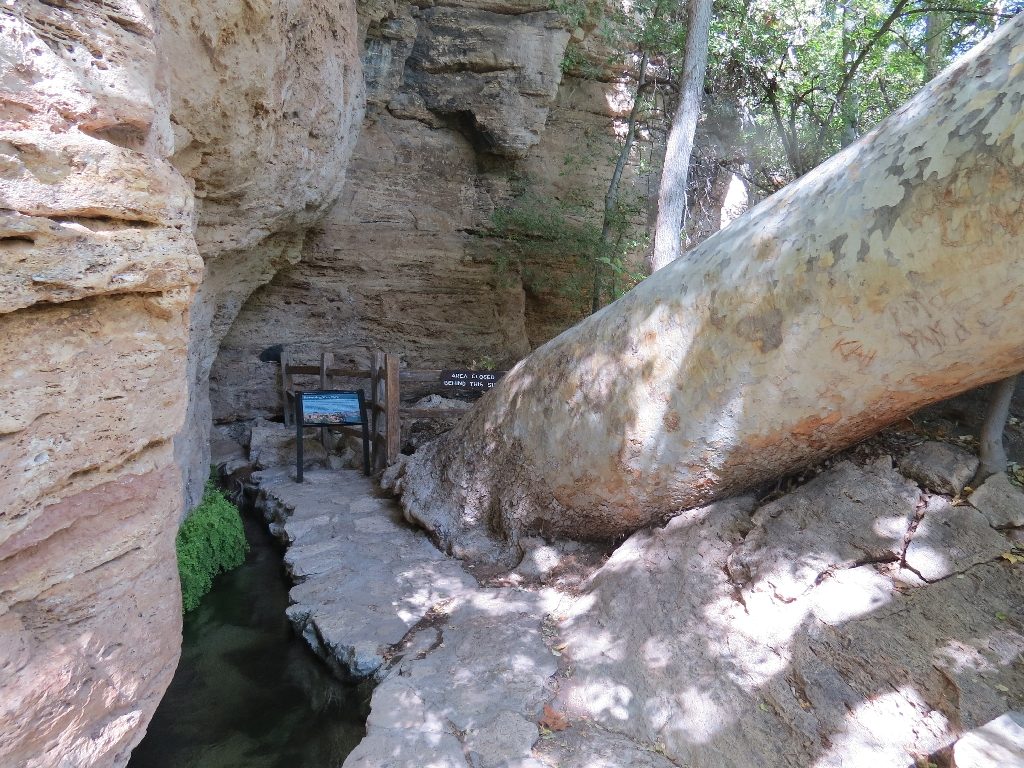
The Outlet is one of the prettiest places in the park. The trail down splits between the irrigation ditch and Beaver Creek. It is a riparian habitat, home to warblers, kinglets, tanagers, grosbeaks, and ducks. Canyon Wrens walk the banks and grab insects off the canal. Black Hawks and Kingfishers cruise over the water looking for fish.
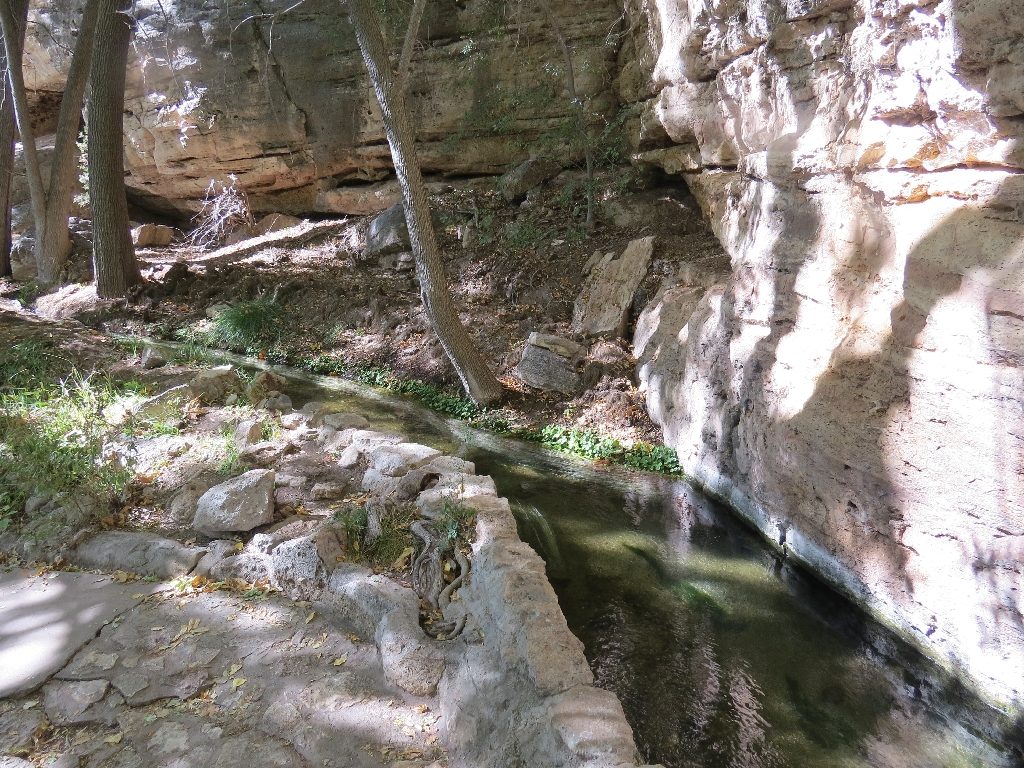

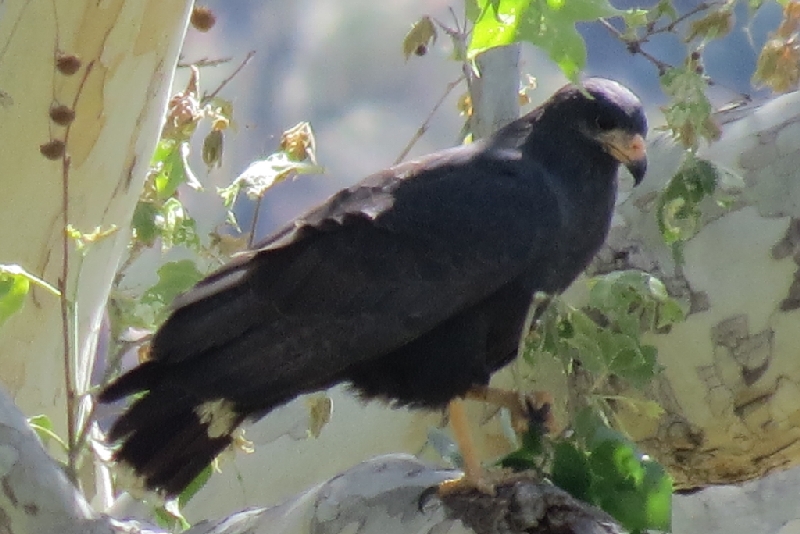
Guided Tours
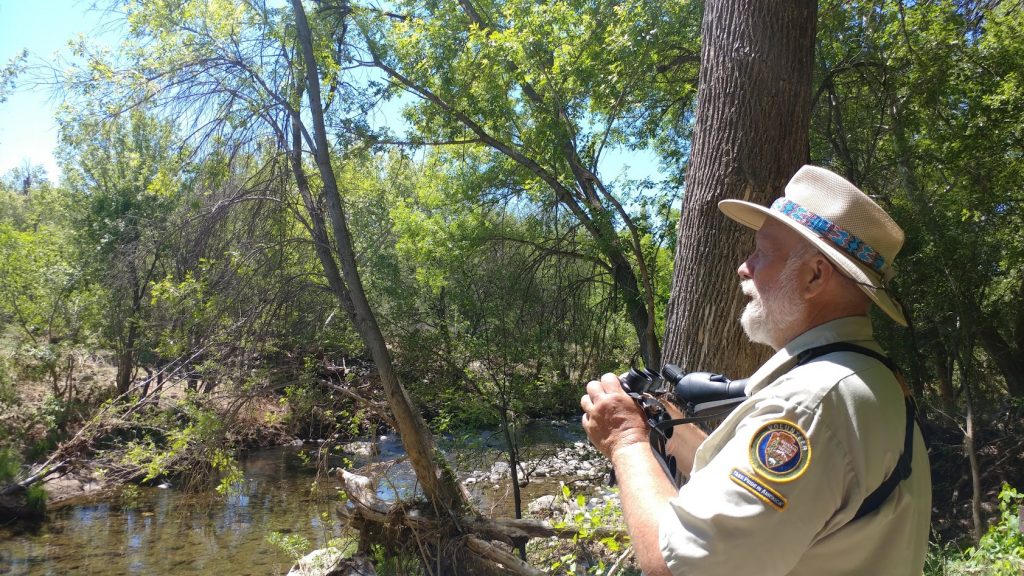
The National Park Service offers free guided bird walks on the first and third Saturdays of the month from September to May. Meet at the Picnic Area at 9 am from September through March and at 8 am during April and May.
Bird Sightings
Year Round |
Breeding |
Migratory |
Wintering |
-Abert’s Towhee -Acorn Woodpecker (occasional) -American Coot -American Crow (occasional) -American Kestral -American Robin -Anna’s Hummingbird -Belted Kingfisher -Bewick’s Wren -Black Phoebe -Brewer’s Blackbird (occasional) -Bridled Titmouse -Brown Creeper -Bushtit -Cactus Wren (occasional) -Canyon Towhee -Canyon Wren -Common Goldeneye (occasional) -Common Raven -Cooper’s Hawk -Crissal Thrasher -Double-crested Cornorant -Eurasian Collared Dove -European Starling -Gambel’s Quail -Gila Woodpecker -Great Blue Heron -Great Horned Owl -Great-tailed Grackle -Greater Roadrunner -Hermit Thrush -House Finch -House Sparrow -Juniper Titmouse -Ladder-backed WoodPecker -Lesser Goldfinch -Loggerhead Shrike -Mallard -Marsh Wren -Morning Dove -Northern Cardinal -Northern Mockingbird -Orange-crowned Warbler -Northern Cardinal -Peregrine Falcon -Phainopepla -Pied-billed Grebe -Red-tailed Hawk -Red-winged Blackbird -Rock Wren -Rufous-crowned Sparrow (occasional) -Say’s Phoebe -Song Sparrow -Sora -Verdin -Virginia Rail -White-brested Nutchatch -Wood Duck -Woodhouse’s Scrub-jay |
-Ash-throated Flycatcher -Bell’s Vireo -Black-chinned Hummingbird -Black-throated Sparrow -Blue Grosbeak -Blue-gray Gnatcatcher -Brown-Crested Flycatcher -Brown-headed Cowbird -Bullock’s Oriole -Cassin’s Kingbird -Cliff Swallow -Common Black Hawk -Common Yellowthroat -Gray Vireo -Hooded Oriole -House Wren -Lucy’s Warbler -Northern Rough-winged Swallow -Olive-sided Flycather (occasional) -Plumbeous Vireo -Scott’s Oriole -Summer Tanager -Turkey Vulture -Vermillion Flycatcher -Violet-green Swallow -Warbling Vireo -Western Kingbird -Western Screech-Owl -Western Wood Pewee -White-throated Swift -White-winged Dove (occasional) -Willow Flycatcher (occasional) -Yellow-billed Cuckoo -Yellow-breasted Chat |
-Bank Swallow -Barn Swallow -Black-headed Grosbeak -Black and White Warbler (occasional) -Black-throated Gray Warbler -Blue-winged Teal -Broad-winged Hawk (occtional) -Broad-tailed Hummingbird (occasional) -Cassin’s Vireo -Common Poorwill -Costa’s Hummingbird (occasional) -Dusky Flycatcher -Eared Grebe (occasional) -Evening Grossbeak (occasional) -Gray Flycatcher -Hammond’s Flycatcher -Hairy Woodpecker (occasional) -Hermit Warbler (once) -Indigo Bunting -Lark Sparrow -Lazuli Bunting -Lesser Yellowlegs (occasional) -Nashville Warbler -Osprey (occasional) -Tree Swallow -Virginia’s Warbler -Rufous Hummingbird -Spotted Sandpiper (occasional) -Western Tanager -Wilson’s Warbler -Willet (once) -Yellow Warbler -Zone-tailed Hawk |
-American Dipper (once) -American Goldfinch -American Widgeon -Brewer’s Sparrow -Bufflehead -Cassin’s Finch (occasional) -Cedar Waxwing -Chipping Sparrow -Cinnamon Teal -Common Merganser -Dark-eyed Junco -Eurasian Wigeon (occasional) -Gadwall -Golden-crowned Kinglet (occasional) -Greater Scaup (occasional) -Green-tailed Towhee -Grasshopper Sparrow -Horned Lark (occasional) -Hutton’s Vireo -Lesser Scaup -Lincoln’s Sparrow -MacGillivaray’s Warbler -Merlin -Mountain Bluebird (occasional) -Northern Flicker -Northern Harrier -Northern Pintail (occasional) -Northern Shoveler -Pine Siskin -Prarrie Falcon -Red-Napped Sapsucker -Redhead (occasional) -Ring-necked Duck -Ruby-crowned Kinglet -Ruddy Duck -Sage Thrasher -Sharp-shinned Hawk -Spotted Towhee -Townsend’s Solitaire -Vesper Sparrow -Western Bluebird -Western Meadowlark -White-Crowned Sparrow -White-throated Sparrow (occasional) -Williamson’s Sapsucker (occasional) -Wilson’s Snipe (occasional) -Yellow-Rumped Warbler |
Links
eBird Montezuma Well Picnic Area Hotspot
Title Photo by Amber Engelmann
